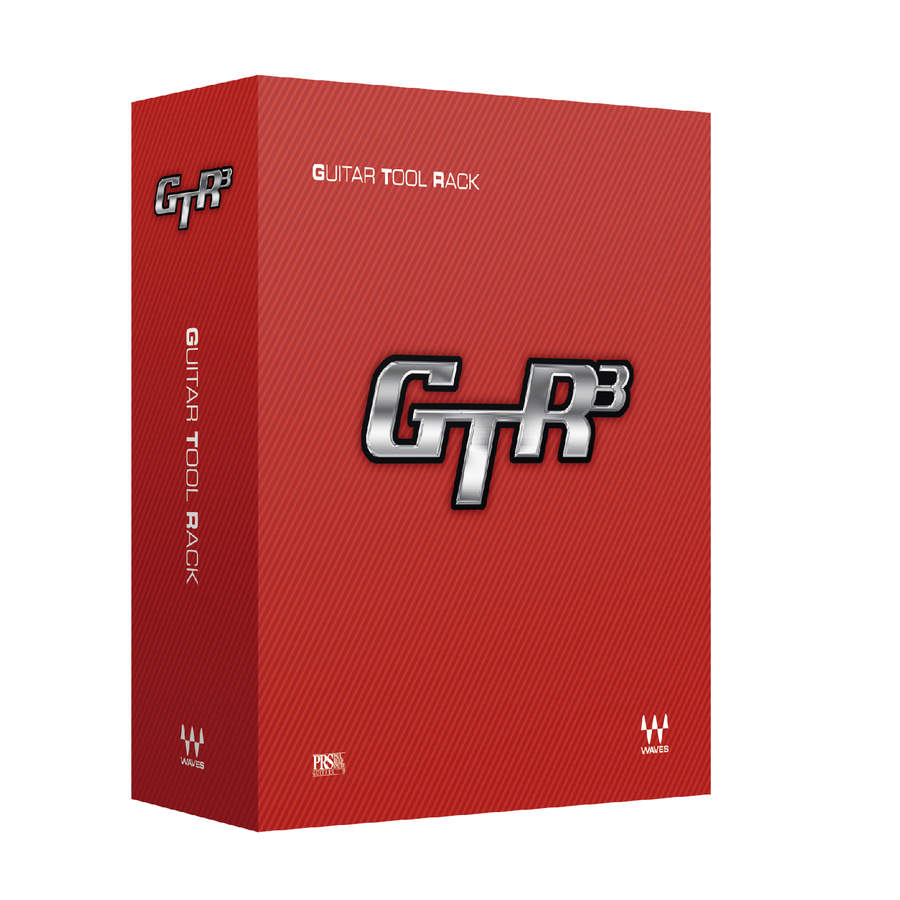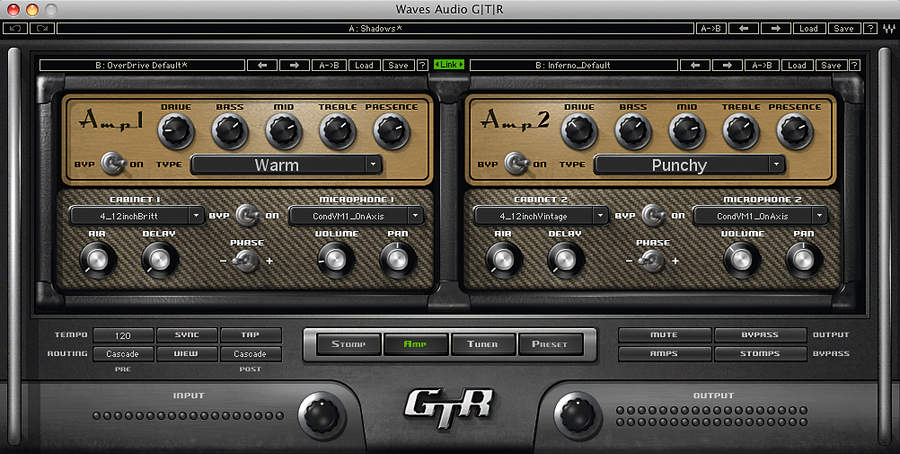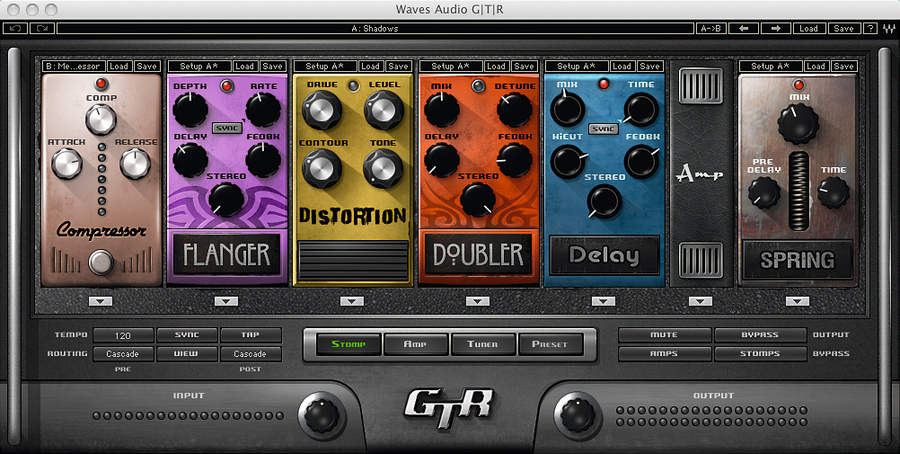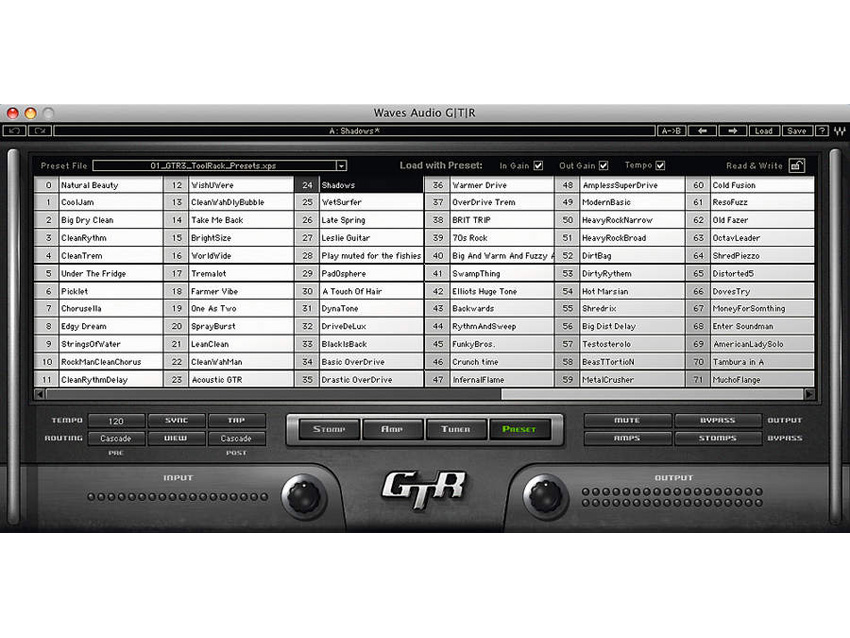MusicRadar Verdict
A practical software amp and effects package with the emphasis on quality sound.
Pros
- +
Classy sounds. Easy operation.
Cons
- -
iLok key needed – ties up a USB port.
MusicRadar's got your back

Waves' GTR3 software.

GTR3 boasts a modular amp setup.

There are plenty of effects units.

Presets are easy to access.
Waves is well known in the professional studio world for its software plug-ins, used throughout the industry for recording, mixing and mastering.
A couple of years ago the company made a move into the guitar side of things in a collaboration with Paul Reed Smith that brought about the original version of the GTR amp and effects software reviewed in Guitarist issue 270.
GTR is now in its third incarnation as GTR3 and Waves recently brought out a more affordable version known as GTR Solo (see boxout).
On top of all this, at the NAMM show in January the company introduced a hardware product: the iGTR, an iPod-style amplification device for guitar.
High time then for us to take a fresh look at just what Waves has to offer to today's guitar players.
Overview
There have been changes since we looked at the first version of GTR. Back then GTR came as a package at £449 that included a high quality DI box to convert your guitar signal to an appropriate level for input into an audio interface's microphone input - not something universally useful as many audio interfaces have a dedicated instrument input anyway.
Now you can buy GTR3 as software only and can buy the Waves DI box separately if you want one. The package of the two is still available with a small saving over the cost of the individual items, and the prices are lower overall.
Want all the hottest music and gear news, reviews, deals, features and more, direct to your inbox? Sign up here.
What you get with GTR3 is software that is primarily designed to be used as a plug-in in a software recording package, but can also be used independently in standalone mode if you just want to plug into your computer and play guitar either for practice or onstage use.
There are various possibilities when using GTR3 as a plug-in, but in standalone mode GTR3 appears on your desktop as the GTR ToolRack, a rig where you can have up to six stomp effects and two amps that can be combined in various ways.
These components can be chosen from a grand total of 19 guitar amp models and 26 stompbox effects.
For each amp model there is a choice of 16 cabinets with each cabinet's sound defined by the positioning of a virtual microphone.
Bass players are also catered for with seven bass amps and six bass cabs. Separate windows can be opened to show the amp/cabinet and stompbox options and new models can be chosen from drop down menus.
Stompbox positions in the signal chain are changed by drag and drop procedures and the amp also appears in the stompbox window so effects can be easily placed pre or post.
A comprehensive tuner also opens on its own page and there is a separate preset page that lists a whole bunch of factory presets and any of your own that you choose to save.
Sounds
Although nearly all are modelled on real examples of classic makes and models, GTR3's amps are categorised as either Clean, Drive, High Gain or Bass and each given a descriptive name.
The actual range of sounds available should provide just about everything a busy studio recording various types of music would need, especially in terms of saturated and overdriven sounds with nine high-gain amp models alongside the five drive, five clean and six bass models.
Bearing out Waves' claim that GTR3 delivers the most realistic guitar amp sounds ever, the authenticity of the sound is consistently high with the modelling responding well to your playing dynamics.
The range of stompboxes is equally wide, some of which can do the job of studio processing in a post-amp position. If you want to get into some tweaking of effects while playing, like using real wah instead of auto wah, dynamic automation is available via MIDI.
With GTR3 you get classy sounds with a well-produced sheen that would fit right into polished commercial recordings.
Trevor Curwen has played guitar for several decades – he's also mimed it on the UK's Top of the Pops. Much of his working life, though, has been spent behind the mixing desk, during which time he has built up a solid collection of the guitars, amps and pedals needed to cover just about any studio session. He writes pedal reviews for Guitarist and has contributed to Total Guitar, MusicRadar and Future Music among others.
